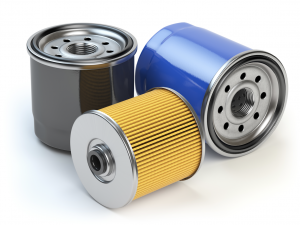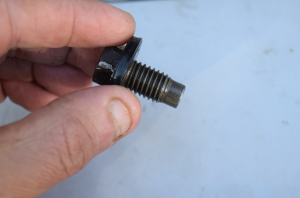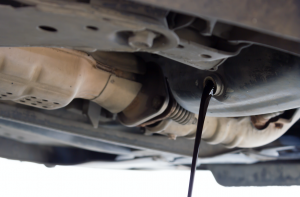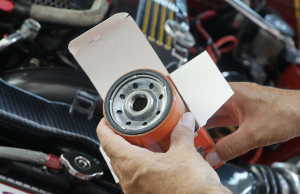The engine of your car is a huge piece of metal comprising many other components that can crash on one another without adequate protection. This is where engine oil enters the picture, which is one of the most important parts of the car’s engine that can affect your safety on the road as well.
You may have watched many DIY videos showing how to top up the motor oil. Before you do, read this blog post first. We talk about what car oil is, its importance, and of course, how you can change the car oil on your own. We will also give you tips and other information about another essential component, the oil filter.
What is a Motor Oil and What Does it Do?
Car oil is one of the most significant factors that affect the performance of your engine. With the right oil, the engine can have a long, good life. The main purpose of the car oil is to make sure the metal parts do not damage one another. These metal parts can either tear at each other or weld themselves together. Improper lubrication of the parts will destroy the engine in just a few seconds.
A lot has changed in motor oil technology. Gone are the days when the oils were simply for lubrication. Today, they have other special uses, including:
- Minimise friction
- Reducing wear and tear
- Cleaning components by removing contaminants in the engine
- Cooling the moving parts
- Absorbing heat from surface areas and moving it to a safe location, including the oil sump
- Dynamically sealing certain components, including the piston-cylinder interface to contain combustion gases in their rightful chamber
- Maximising horsepower and preventing contamination in the motor oil through the dynamic seal
- Cushioning the blow of shock, so the engine resists rupture
- Absorbing and dispersing mechanical shock to a wide contact area, which reduces the impact
- Protecting against corrosion of the engine’s internal components
Why It is Crucial to Change Car Oil on Time
The entire process of changing car oil can take as quickly as 30 minutes. First-timers will usually take longer, but it is generally a straightforward process. Unfortunately, many car owners neglect oil change, delaying the task until they find something wrong with the engine.
Changing your car oil is important – period. Car experts often tell drivers and car owners to replace the engine oil for many reasons including:
Maintain the Lubrication of the Car Engine
You already know that under the hood of your car there are numerous moving parts, such as pistons and valves. They are all moving at high speed, which creates heat. You can imagine how quickly the engine will wear down when there is no lubrication. Therefore, you must keep your car properly lubricated by changing the oil regularly.
The Motor Oil Will Keep the Engine Components Cool
The moving parts of the car will create friction that turns into heat when they are not lubricated. With clean and adequate amounts of oil, you can stop the engine from overheating.
The Oil Will Help Get Rid of the Dirt and Sludge in the Engine
The car engine can get dirty over time. If you do not remove the dirt, it can lead to corrosion and eventually the death of the engine. Additionally, if you do not change the car oil regularly, dirt will break down and become “sludge.” Routine changes of the oil, as well as the filter, will remove these dirt particles to keep your engine running efficiently.
Regular Oil Changes Can Help Improve the Mileage of Gas
When the engine is not properly lubricated, the fuel consumption of your car greatly increases. Therefore, it makes sense that you have clean oil in the engine, which improves gas mileage by up to two per cent. Yes, it may not sound like a HUGE improvement, but it will certainly lead to a ton of savings over time. In fact, you can save almost four litres of gas every year!
An Oil Change Can Lengthen the Lifespan of Your Car
Routine maintenance can help make your car last longer – plain and simple. You want to keep dirty oil away from your car’s components, so they do not have to work harder, which increases the risk of the engine breaking down.
How to Check When It is Time to Change the Car Oil
Oil changes are such a hassle, but they are a necessary task. The good news is that you do not have to perform an oil change when it’s not needed. There is no solid rule when it comes to the time you should replace the old, dirty oil. Certain factors determine when you should change the oil, including:
- The way you drive
- The age of your car or the engine itself
- Your location
Many mechanics, however, agree that the car oil should be changed every 4800 kilometres (3000 miles). Car manufacturers, on the other hand, suggest that you change the oil when you reach 8000 kilometres (5000 miles) or even more. Typically though, you will need to keep checking every three months. Ideally, you replace the old oil and filter during this time for the best results.
If you use synthetic oil, it may be possible to go without changing up to 16,000 kilometres (10,000 miles). While your engine may be able to take oil changes every 8000 km, we recommend you change the oil more often. It is especially helpful if you have an older engine or you drive at high speeds.
What is the Best Motor Oil for Your Vehicle?
Before you change your car oil, you first have to select the right oil for your vehicle. There are specific rules to follow, depending on the needs of your car. The three core types of car oil on the market today are:
-
Mineral Oil
Some people opt for mineral or standard oil because it is the cheapest type of motor oil available. It is essentially a byproduct of crude oil in which mineral oil is produced after crude oil is refined. Car companies, however, do not recommend this type of oil except for a select few. The reason behind it is that mineral oil lacks good qualities that the other types of car oil have.
Mineral oil does not help clean the engine. Plus, it cannot stand extremely high heat and low temperatures unlike other types out there. Nevertheless, it is still perfectly fine to use mineral oil for your engine, especially if you have an older car. Also, it is recommended that you only use your car in mild climates
-
Synthetic Oil
Out of the choices you have, synthetic oil is the most expensive option, but for a reason. It is engineered to work over different temperatures and conditions, both the highs and lows. It reduces engine drag, which in turn helps conserve fuel usage. Synthetic oil is also efficient in cleaning the internals of your engine as the fluid gets pumped around. This oil reduces the need to change, making it good for the environment.
- Semi-Synthetic Oil
This oil is part synthetic and part mineral oil. The blend helps lower the price of the product since pure synthetic is costly. It comes with the benefits of synthetic oil, but it also has some of the disadvantages of mineral oil.
Other Considerations When Choosing Car Oil
Additives and viscosity are also two things to know about when you choose the oil for your car.
Additives
Aside from the type, you may also want to know about motor oil additives. Oils come with different chemicals that offer benefits, including anti-wear, protection against corrosion, anti-foam, and acid neutralization, among others.
Some of the chemical additives in motor oils are boron, zinc, and phosphorous. The chemicals in the oil do not determine its efficiency. Oil formulators are still searching for ways to strike the perfect balance between additives and base oils.
Viscosity
Viscosity is an important factor to consider when choosing the oil for your car. It refers to the oil’s ability to resist flow. The oil’s viscosity changes depending on the temperature.
You probably already know cold temperatures are essential so the oil flows freely. This way, it can lubricate the engine when you turn on the ignition. However, it is also important that the oil remains thick. Appropriate thickness protects the engine when the components operate at high temperatures. To make sure that the oil is efficient no matter how, when, and where you drive your car, the change in viscosity should not be drastic.
It would certainly be handy if you know the viscosity of the oil, right? The good news is that the Viscosity Index is labelled in every product. You can measure the viscosity index as well by comparing the oil viscosity at 40C with 100C.
If you get a higher VI, it means that there will be much less change in viscosity when the temperature increases or decreases. More often than not, synthetic oils have a higher VI when compared to conventional or standard oils, such as mineral oils.
The Society of Automotive Engineers Australasia (SAE-A) gives guidelines for different viscosity grades and classifications. When you look at the label of the product, you will see numbers and a letter, such as 10W-40 or 15W-50.
These grades tell you about the particular range where the oil falls. The numbers represent the temperature range. Lower numbers indicate that the oil will remain efficient even when the surroundings are cold, such as during winter. Consequently, the higher the number, the better the protection is for higher load and heat conditions.
The letter W in the examples above points to the suitability of the oil for use in low temperature. Think of it as something that stands for “winter.” The SAE-A has a numbering system that starts with a 0, followed by 5, 10, 20, 30, until 60. If the oil is labelled 10W-40, the oil will flow correctly even in temperatures dipping to -40 C.
Most of the oil products today have multi-viscosity. Therefore, they behave differently depending on the temperature, giving consumers the best of both worlds. They can work even in cold temperatures as they still provide good flow. Also, they provide reliable protection, even when the engine reaches high temperatures.
Important Reminders Before You Start Changing the Car Oil
If it is your first time to change the car oil, you may want to know these things first:
If you see that the oil light is on, it means you have low oil pressure. You should not drive your car when it is illuminated to avoid catastrophic engine damage.
It can be tempting to choose the oil grade that offers the widest coverage or rating. However, you will gain more with the product that has the narrowest range. Choose the oil that best suits the ambient temperatures in Sydney. This way, you get the product that is optimised for your location.
If you have a new car that you rarely use, be sure to check the oil level at least once a month. On the other hand, if you use your car more or if you have an older one, it is best to check the vehicle’s oil level once a week.
If you were using oil that is inferior to synthetic oil, and you decided to use the latter, you should change the filter as well. Debris, including carbon deposits, may likely be present. The new oil can clean them out, so you have a better engine.
It is recommended that you change the oil filter whenever you change your car oil. The filters trap unwanted materials from the oil, so they do not circulate the engine. These particles can accumulate over time and will make the filters ineffective unless you get a new one.
Since we have mentioned the oil filter and its importance, we are going to talk about it in the next section.
All About Oil Filters
Just like oil itself, oil filters protect the engine from damage. They help get rid of contaminants, including oxidised oil, dirt, and metallic particles, among others. These particles accumulate and join the oil because of engine wear.
Replacing your old filters with a new one is incredibly important for the following reasons:
- Full-Flow Filtration: Newer engines now have a full-flow filtration process, making the filter your engine’s first defence. The oil will directly move from the reservoir to the engine while passing through the filter.
- Reduced Engine Wear: Contaminations will eventually build up on the filter. You should never wait for it to be completely clogged; otherwise, the oil passage can become obstructed. The good news is that most oil filters today can help prevent engine failures through their bypass valve.
- Lower Maintenance Costs: Regular oil changes are crucial in reducing the overall maintenance costs of your vehicle. Think about how much you can save by simply buying an extremely affordable oil filter compared to paying for the damaged engine.
- New Oil Protection: The filters protect new oil from getting soiled.
While there are recommendations on when you should change the filter, you may want to check certain symptoms that tell you it is time to change it:
- The service engine light is on. This particular light can turn on for many reasons. However, it mostly means that there is something wrong with the engine. With grime and debris in the engine, the filter will get clogged quicker.
- You drive in severe conditions most of the time. If you tow heavy loads, drive through extreme weather conditions, and you continuously deal with traffic, your filter may need replacement more often than normal.
- You need to do an oil change. If you have reached anywhere from 5000km to 10,000kmm, it may be time for an oil change if you use petrol for your car.
- Meanwhile, if you utilise diesel, you can opt to change the filter every 15,000km. Once again, you should check your car manufacturer’s handbook to be sure about the interval of changing the filters.
It is possible to extend the life of your oil filter with the help of good quality synthetic oil. This type of oil is better than standard oil because it is much more distilled and refined. Therefore, it has fewer particles that will clog the oil filter.
Step by Step Guide on How to Change Your Car Oil
Armed with all the pieces of information above, you are now ready to change your car oil without professional assistance.
Before you begin, you should have the following tools ready:
- Wrench for removing the drain plug
- Oil filter wrench
- Funnel
- Oil drain pan
- Latex gloves
- Ramps or jack stands and jack (optional)
Of course, you will need a new oil and oil filter. On some occasions, you will have to prepare a replacement drug plug washer.
Consult your manual to know the type of oil needed and how much of it. You should also match its viscosity, along with specific oil requirements, such as using synthetic oil only.
Now that you are ready, here are the steps to change your car oil:
1. Prepare Your Car
Before you change the oil, the car should be a little warm but not hot. The exhaust system should be a little cold but not stone-cold. During this stage, you should already have raised the car to gain better access to it.
If necessary, you may want to remove the undercover. If you have a newer car, you may have aerodynamic covers, which help in improving fuel economy and cleaning things. These covers typically conceal the oil filter and drain plug, so you may have to take them off.
2. Find the Drain Plug and Oil Filter
Most cars possess a screw-on filter mounted at the bottom. If you have the same design, the filter and plug are far away from each other. You need to move the drain pain once you are done draining the oil and before removing the filter.
It is best to drain completely and plug the engine back before you work on the oil filter. Meanwhile, if the drain plug and filter are closer to each other or you have a bigger pan, you can remove the filter while the oil is still dripping.
3. Drain the Oil
It is now time to remove the old oil from the engine. Make sure that you have a drain pan under the plug but not directly under. Note the angle of the plug, so you can determine where to place the pan. The next step is to remove the filler cap, which will help the oil flow more smoothly.
Put your gloves on and remove the drain plug. Prepare for the mess here. You will usually need a common end wrench to remove the plug, which you should do so slowly. Also, keep your hands off the path of the oil, which will gush out quickly. If the piping is hot, you could burn your skin.
4. Replace the Drain Plug
While you wait for the oil to flow out completely, you should check the oil drain plug. Clean it as well. If you have a new drain plug washer, now is the best time to install it. However, some cars have a permanent O-ring drain plug, so they do not need a new washer.
Nevertheless, if you do need a replacement washer, it makes sense to remove the old one from the oil pan of the engine.
The next step is to tighten the drain plug using a combination wrench’s box end. A standard ratchet will also work here, but do not go for anything longer or larger, so as not to over-tighten the bolt.
5. Change the Oil Filter
Get rid of the old filter and install a new one. Most of the new filters today do not need you to install them tightly. However, it can be difficult to remove them later because the sealing gaskets tend to swell.
The filter, once removed, will loosen hurriedly. The oil will gush out, so be sure to be ready. Go slow when unscrewing the filter. You can simply use your hand to unscrew it. Have the drain pan in position before you start removing the filter. Make sure you do not let go of the filter as it begins to come off, even with oil pouring down.
Clean as much oil as you can using the rags. Pay attention to the sealing surface of the filter and ensure it does not have the O-ring of the old filter. It usually gets stuck to the surface, and you may not notice it until you try to seal the O-rings.
Before installing the filter, smear a bit of new oil on the replacement filter’s O-ring that you just installed.
6. Install the New Filter
Get a good grip as you install the filter. Spin the filter gently until you see the O-ring touching the sealing surface. Before you tighten the new filter into place, you may want to draw a line of reference using a marker or pen. Oil filters, in general, should be tightened about ¾ of a turn and nothing more until you go beyond the first contact of the O-ring and sealing surface. You may want to read the instructions on the oil filter box to know the correct amount.
7. Fill It Up With the New Oil
With the drain bolt and filter in place and tightened well, you can now add oil. Refer to your manual to know how much your engine needs. However, it is recommended that you add one litre less of the suggested amount.
8. Replace the Oil Cap
When you have poured all the needed oil, you can put the oil cap back. You can check by running the engine for about 30 seconds to a full minute. It helps circulate the oil throughout the engine. Then, you should shut the engine down and ensure the work area does not have leaks underneath.
If you are satisfied with the results, you can now remove the ramps or jack stands.
9. Ensure the Oil is at the Right Level
By now, the car is on flat ground after removing the ramps. Your job is not done yet because you still have to check the oil. Above, we have recommended that you short-fill the oil slightly. Therefore, you should not be surprised that you need to add a little bit more. You will know the oil level is full when you see the oil coming up to the hash mark or hole.
10. Dispose of the Oil and Filter Properly
The final step is to make sure that you have disposed of the wastes conscientiously. Never throw the filter and oil anywhere you want. You can take them to an auto parts store where oil is sold. They will often take the waste oil without any charge. However, if the store does not accept old oil, you can find local drop-off points in Sydney for hazardous waste.
Congratulations! You have completed changing the oil and filter of your car. Once you have done this task a couple of times, you can accomplish it in less than 30 minutes next time.








